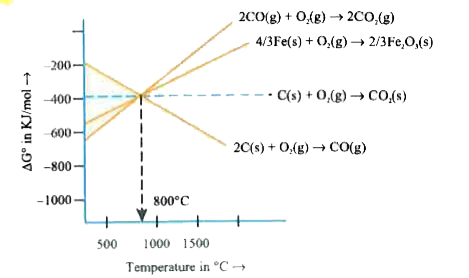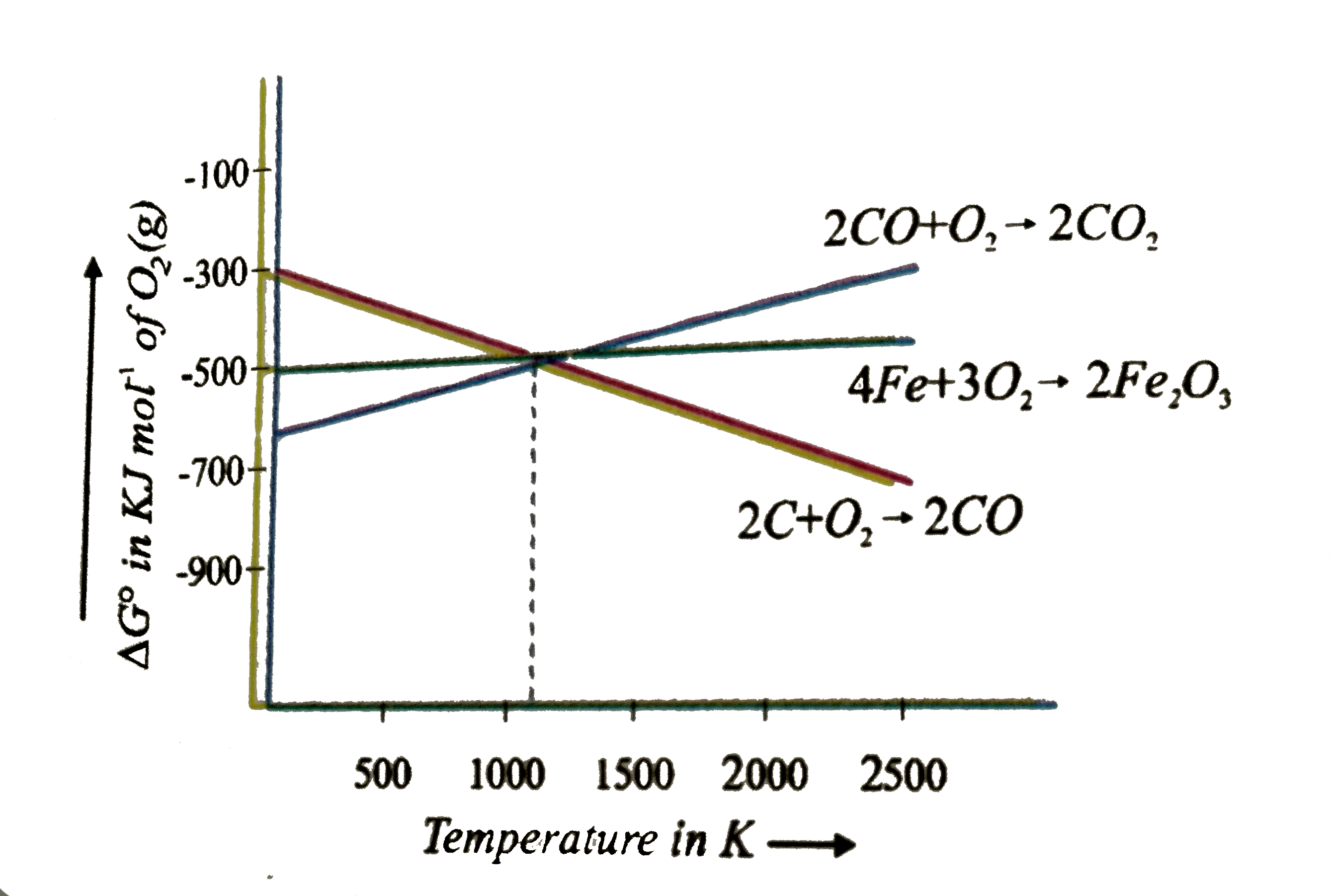Cabon cannot reduce Fe2O3 to Fe at a temperature below 983K because.
Free energy change for the formation of CO is more negative than that of Fe2O3
CO is thermodynamically more stable then Fe2O3
Carbon has higher affinity towards oxygen then iron
Iron has higher affinity towards oxygen than carbon
The correct Answer is:D
Step by step video, text & image solution for Cabon cannot reduce Fe_(2)O_(3) to Fe at a temperature below 983K because. by Chemistry experts to help you in doubts & scoring excellent marks in Class 12 exams.
Updated on:21/07/2023Topper's Solved these Questions
- METTALURGYBOOK - NARAYNACHAPTER - METTALURGYEXERCISE - Statement Typer Question
2 Videos
- METTALURGYBOOK - NARAYNACHAPTER - METTALURGYEXERCISE - Extraction of metals
44 Videos
- METALLURGYBOOK - NARAYNACHAPTER - METALLURGYEXERCISE - STATEMENT TYPE QUESTOINS
20 Videos
- NUCLEAR CHEMISTRYBOOK - NARAYNACHAPTER - NUCLEAR CHEMISTRYEXERCISE - INTEGER
28 Videos
Similar Questions
Consider the chemical reaction given below and identify the row containing substances oxidized and reduced:
Fe2O3+3CO→2Fe+3CO2
Select the correct statements:
(I) Fe2O3 is reduced to Fe
(II) Fe is oxidized to Fe2O3
(III) CO is oxidized to CO2
(IV) CO2 is reduced to CO
View SolutionDirect reduction of Fe2O3 by Carbon is possible at temperature.
View Solution
Knowledge Check
Carbon cannot reduce Fe2O3 to Fe at a temperature below 983K because
Afree energy change for the formation of CO is more negative than that of Fe2O3BCO is thermodynamically more stable than Fe2O3Ccarbon has higher affinity towards oxygen than ironDiron has higher affinity towards oxygen than carbon.Carbon can reduce ferric oxide to iron at a temperature above 983K, because
Acarbon monoxide formed is thermodynamically less stable than ferric oxideBcarbon has a higher affinity towards oxygen than ironCfree energy change for the formation of carbon dioxide is less negative than that for ferric oxideDiron has a higher affinity towards oxygen than carbonDirect reduction of Fe2O3 by CO is possible at temperature.
Aless than 1123 KBequal to or less than 1123 KCmore than 1123 KDequal to or more than 1123 K.
Correct statements form the graph

I) Above 1073K, ΔG0 for the formation of Fe2O3 is less negative than ΔG0 for the formation of CO from carbon
II) Above 1073K, Carbon can reduce Fe2O3
III) Below 1073K, CO can reduce Fe2O3
IV) In blast furnace, reduction of Fe2O3 occurs in different temperature ranges with below 1073K by CO (or) above 1073K by carbon
View SolutionReduction of Fe2O3 with CO is done below 710∘C.
ΔfGӨ is negative at this temperature , this process is spontaneous.
View SolutionCorrect statements from the graph

I) Above 1073 K,ΔG0 for the formation of F2O3 is less negative than ΔG0 for the formation of CO from carbon
II) Above 1073K, Carbon can reduce Fe2O3
III) Below 1073K, CO can reduce Fe2O3
IV) In blast furnance, reduction of Fe2CO3 occurs in different temperature ranges with below 1073K by CO (or) above 1073 K by carbon
View SolutionFe3O4 is ferrimagnetic at room temperature but at 850K it becomes::
View SolutionAssertion : Fe3O4 is paramagnetic at room temperature and becomes ferromagnetic at 850K
Reason : The randomization of spin takes place with temperature.
View Solution
